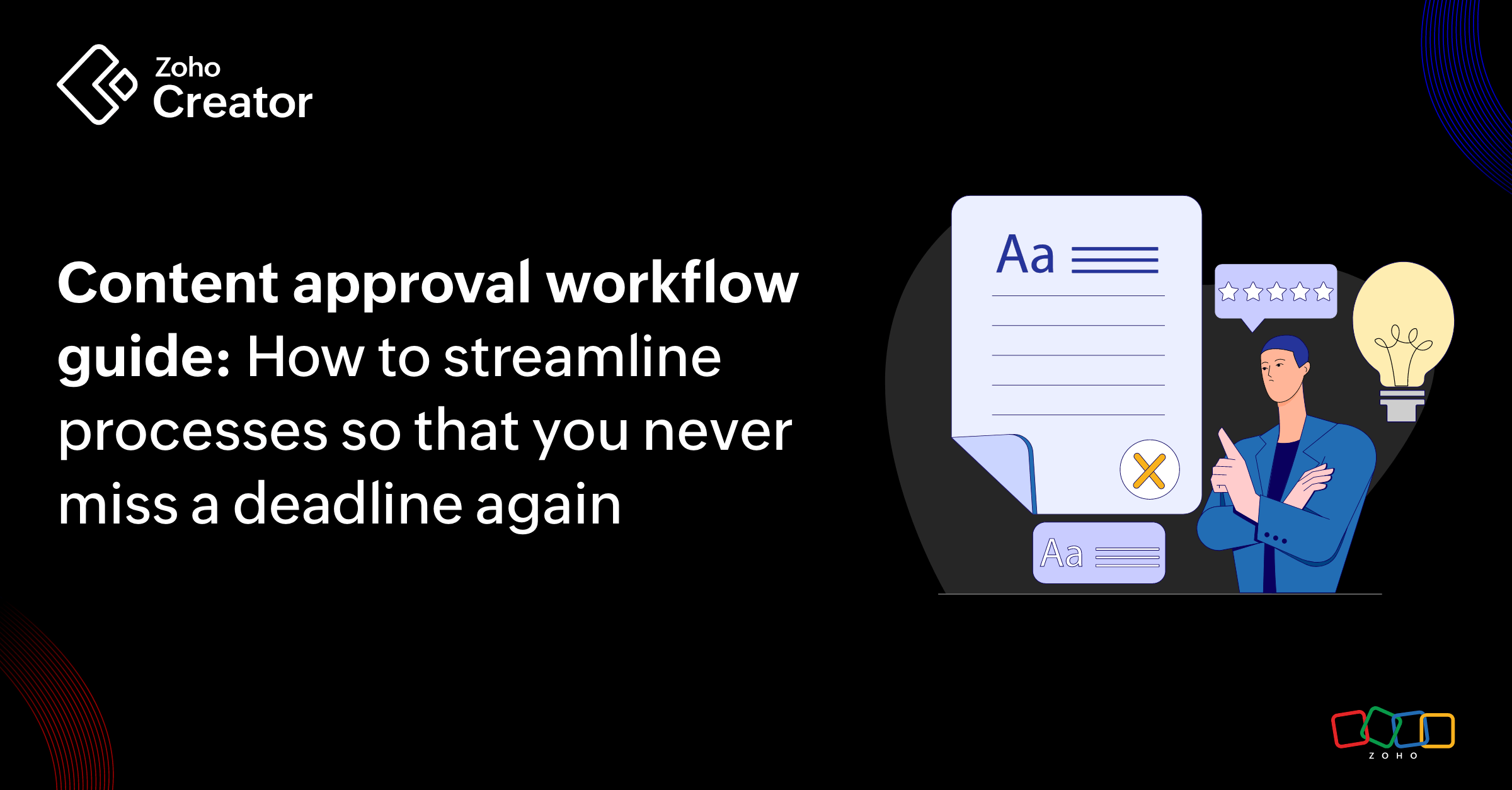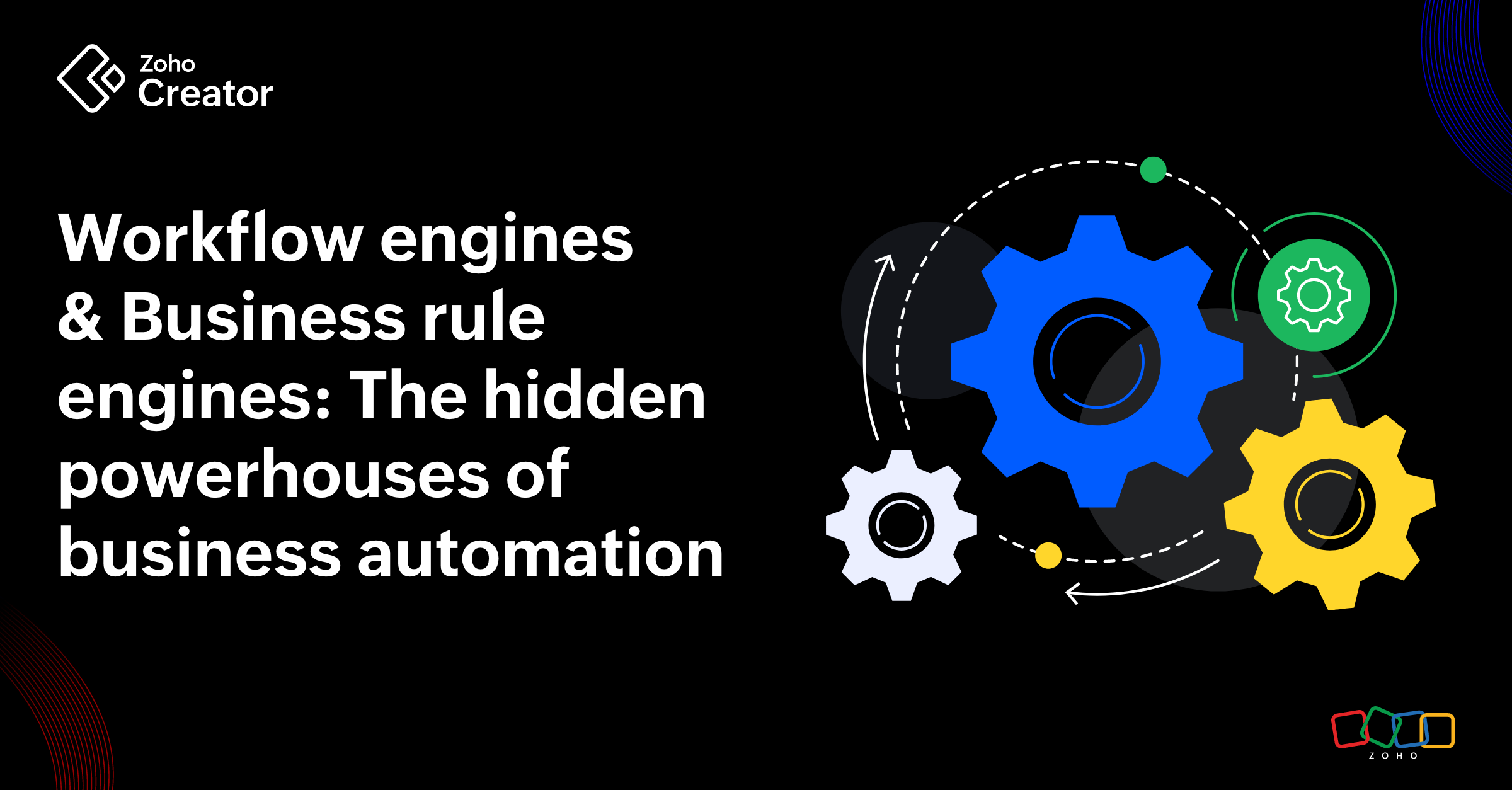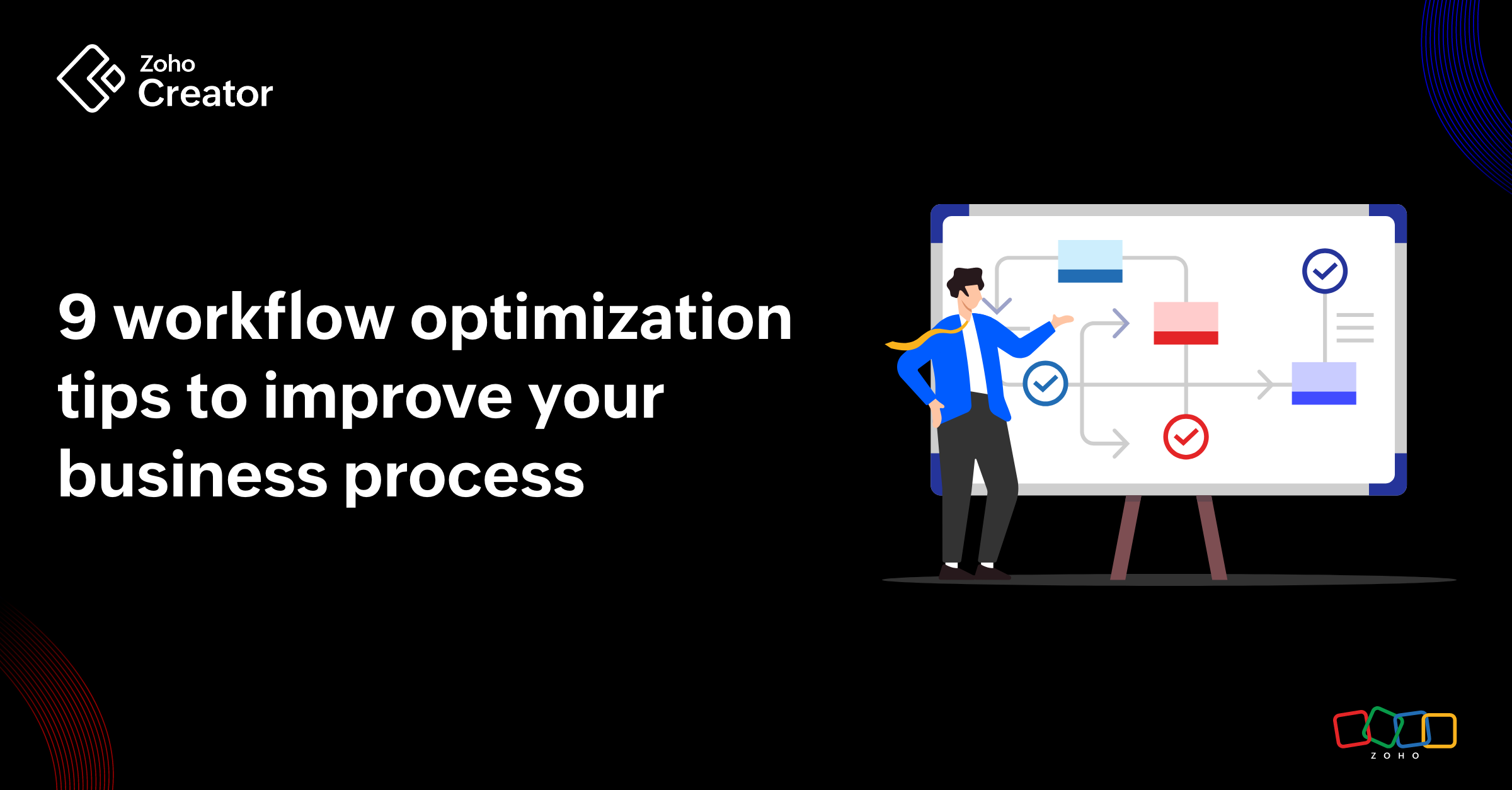- HOME
- Know Your Tech
- RAD plus JAD: An agile formula for your software development needs
RAD plus JAD: An agile formula for your software development needs
- Last Updated : April 18, 2025
- 178 Views
- 5 Min Read
Gartner forecasts software spending will hit $1.23 trillion this year, emphasizing how organizations are relying more on applications to scale and stay competitive. Today, applications serve as strategic assets that drive efficiency, productivity, and customer engagement.
Considering this, choosing the right development approach becomes critical. Software development has evolved significantly over the years, shifting from lengthy, linear processes to agile and iterative methodologies.
Among many agile approaches, rapid application development (RAD) has gained widespread adoption due to its ability to quickly build prototypes and iteratively improve them based on continuous user feedback.
In this post, we’ll explore the rapid application development approach in detail and look at how it integrates with joint application development (JAD) to create scalable business solutions.
Breaking down the rapid application development process
The RAD model follows four key phases:
Requirements planning
This phase involves gathering system requirements from stakeholders to define what the application should achieve at a high level. The main focus is on finalizing the key features and functionalities needed within the system.
User design
During this stage, developers collaborate with users to create interactive prototypes that mimic the actual application. These prototypes are then reviewed by users to improve the design before moving on to full development.
Construction
In this phase, the actual development of the application begins. The prototypes are transformed into operational models, allowing users to interact with them and offer feedback. Later, iterative adjustments are made to refine key features to align with client satisfaction.
Cutover
The last stage involves testing, improving, and releasing the final application to users. It also includes data migration, system integration, user training, and final adjustments for a smooth transition.
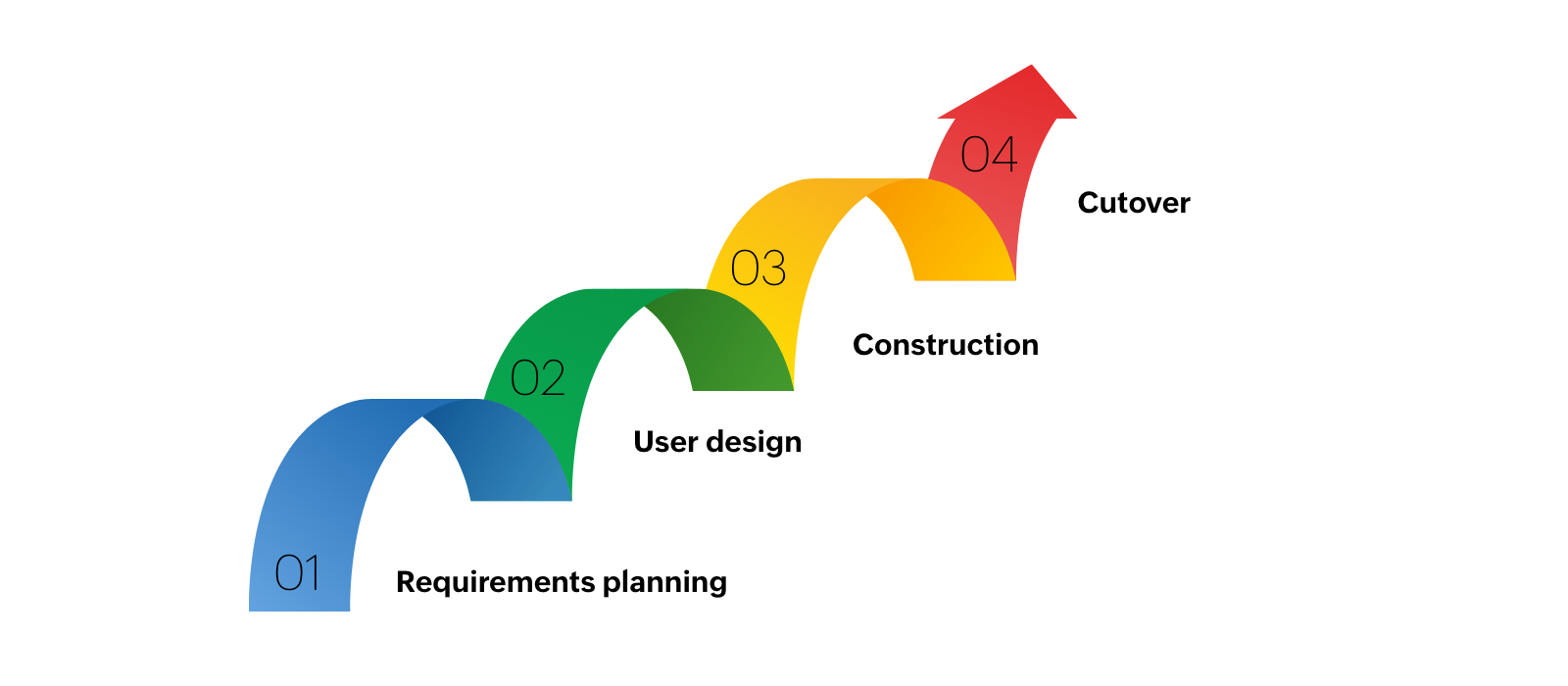
Here are a few reasons why you should consider adopting RAD
Rapid prototyping:
RAD enables the quick creation of prototypes, or proofs of concept (POCs), allowing stakeholders to visualize a working model early in the development process. This speeds up feedback, refines requirements faster, and ultimately reduces time to market.
Ongoing user feedback:
RAD’s iterative nature allows developers to refine and test prototypes continuously based on real-time user feedback. This dynamic process helps identify and fix issues early, ensuring the final product aligns with user needs while reducing costly rework.
Time-boxing for rapid delivery:
RAD projects are broken into manageable sprints, with defined timelines for each module. This time-boxing approach helps track progress, ensures rapid delivery, and keeps the development cycle on schedule.
Automated code generation:
RAD platforms have built-in code generation capabilities, enabling applications to be converted into scripts. This reduces manual coding efforts, eliminates the need to build an entire project from scratch, and speeds up deployment.
Flexibility for evolving requirements:
RAD follows an agile project management approach, enabling businesses to make updates in real time. It allows developers and business users to refine apps on the backend via a live production environment without impacting the active application.
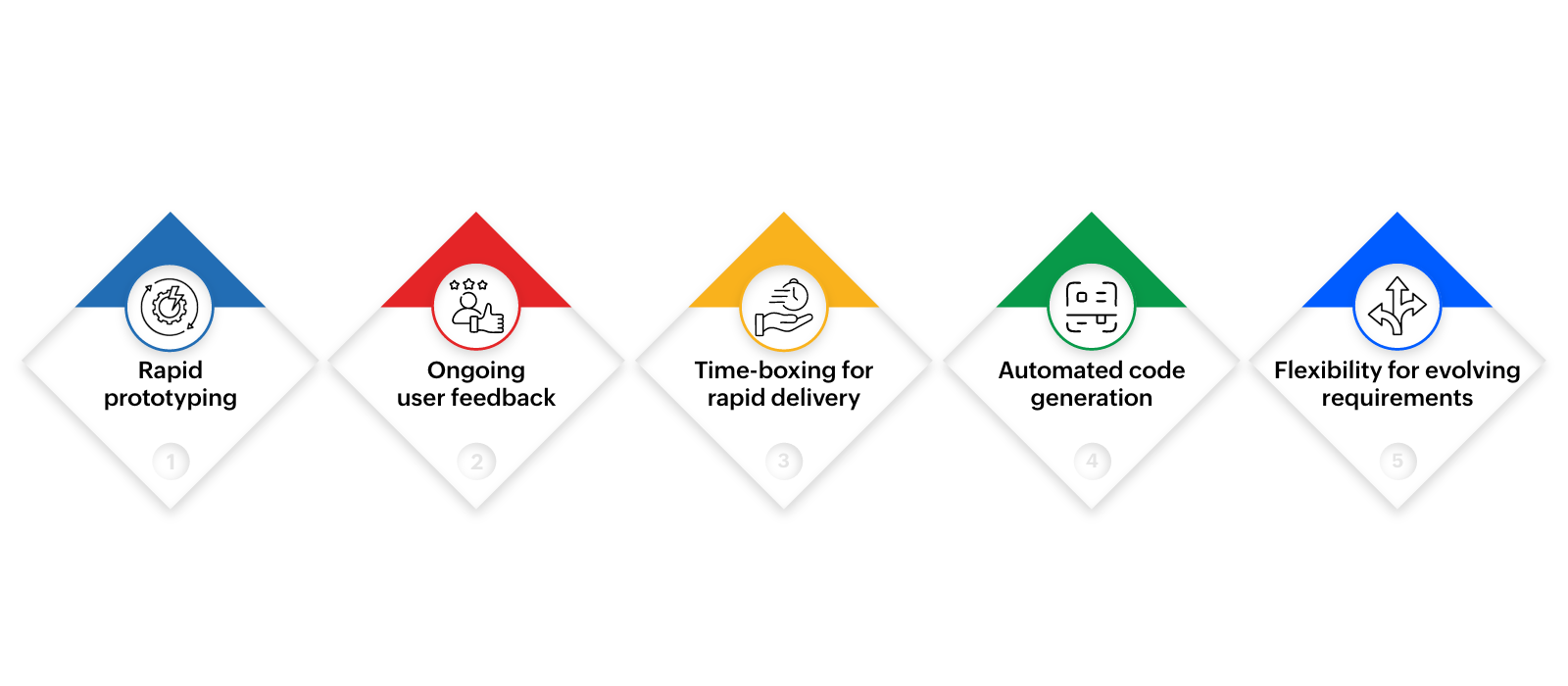
When is the rapid application development model the right choice?
Micro systems:
Using rapid application development tools, businesses can build micro solutions—small apps that streamline everyday work, from approval workflows to fleet tracking systems. With drag-and-drop builders and ready-to-use templates, these apps can move from idea to execution in days..
Self-service portals:
RAD makes it easy to create portals for customers or employees by assembling common components—forms, dashboards, reports—without starting from scratch. A bank, for instance, can rapidly build and deploy a portal where users apply for loans or view account details without spending a long time on development.
MVPs for startups:
Startups can launch a minimum viable product (MVP) by quickly building functional software that just includes critical features. These MVPs can then be refined based on feedback from users and investors. For instance, a food delivery startup can create an MVP with essential functions like restaurant listings, order tracking, and payments, helping them validate the concept before a full-scale launch.
Boosting RAD with a touch of JAD
Rapid application development is an excellent choice for projects that require speed and flexibility. However, when projects become more complex—with multiple teams or systems involved—a little extra structure can go a long way. That’s where joint application development (JAD) comes in.
Think of JAD as a helpful boost for RAD; it brings stakeholders together early to align on goals, clarify requirements, and ensure everyone’s on the same page.
By combining RAD’s agility with JAD’s collaborative planning, you get the speed of rapid development with the added confidence of clear direction, resulting in smarter, faster, and more scalable solutions.
JAD sessions typically involve processes like requirements planning, preparation, refinement, and final documentation to make sure everyone’s aligned before the development cycle begins. However, integrating with RAD enhances agility without compromising structure. Here’s how it works:
Requirements gathering:
JAD facilitates in-depth discussions, where key user groups outline their business requirements in structured workshops. Once documented and approved, RAD helps convert these requirements into interactive prototypes, enabling users to see core functionalities at an early stage.
Design and user feedback:
JAD ensures user involvement on the design through collaborative sessions, while RAD enables rapid development of working models. This iterative process allows immediate adjustments based on user input, ensuring the system meets business needs efficiently.
Development:
With requirements and feedback streamlined through JAD, RAD ensures agility throughout the development cycle. Prototypes evolve into fully functional applications with the flexibility to incorporate changes quickly while maintaining alignment with business goals.
Deployment:
The final application is deployed, integrating various modules and ensuring seamless data flow across business functions. JAD-driven collaboration ensures all stakeholders are aligned on the final product, while RAD’s flexibility allows ongoing refinements without disrupting operations or customer satisfaction.
For instance, when building custom core systems—like CRMs, HR platforms, or supply chain tools—teams often need to address intricate workflows, integrations, data management, and privacy needs. JAD sessions bring together key stakeholders from various business functions to map out these details early on, while RAD enables the team to quickly build and iterate on prototypes.
This combined approach of RAD and JAD ensures a blend of structured planning with agility. As a result, businesses can reduce technical risks, improve alignment, and build applications that continuously adapt to user needs.
Final thoughts
In a nutshell, rapid application development accelerates software development by prioritizing speed and flexibility. However, for large-scale solutions, integrating JAD brings structured planning and stakeholder alignment without sacrificing agility. Rather than choosing one over the other, businesses can blend these approaches to build scalable, adaptable software that evolves with their needs.
If you're looking to get started, Zoho Creator—an AI-enabled low-code application platform—seamlessly blends these methodologies. With its visual components, businesses can rapidly build and deploy applications, from simple approval workflows to custom ERPs.
 Syed Kamaluddin H
Syed Kamaluddin HSyed is a product marketer at Zoho Creator who is passionate about staying up-to-date with the latest trends in the industry. At work, he strives to promote low-code. Outside of work, Syed is a versatile individual who enjoys writing poetry in Urdu, exploring new destinations, and engaging in physical activities to maintain his health.

